Yellow Crane Tower is a landmark building in Wuhan, perched atop the Snake Hill on the southern bank of the Yangtze River. It is a national 5A-level tourist attraction and is known as the “The First Scenery under Heaven.” Together with the Qingchuan Pavilion and Guqin Terrace, it is one of Wuhan's top three scenic spots. The famous Tang Dynasty poet Cui Hao wrote his renowned poem Yellow Crane Tower here, bringing the tower widespread fame. The area surrounding the tower features a number of auxiliary structures, including a bronze sculpture of a yellow crane, pagodas, memorial archways, pavilions, corridors, and others. Additional buildings such as the Baiyun Pavilion, Sheng Xiang Pagoda, stele corridors, and temple gate are also part of the complex.
Opening Time: October 1957 Length: 1,670.4 m
Design Speed: 100 km/h for the upper deck, 160 km/h for the lower deck
The Wuhan Yangtze River Bridge starts at the Chuqin Interchange in the west and ends at Zhongshan Road in the east. The upper deck serves as a two-way, four-lane urban arterial road, while the lower deck accommodates dual tracks for the railway. This bridge connects Hanyang District and Wuchang District and plays a vital role in linking the Beijing-Hankou Railway and the Guangzhou-Wuchang Railway. It was the first combined double-deck road-rail bridge built after the founding of the People's Republic of China and is one of Wuhan‘s most significant historical landmarks, earning the reputation of being the “First Bridge over the Yangtze River.”
In the summer of 1956, Chairman Mao Zedong visited Wuhan and swam across the Yangtze River for the first time. Standing before the emerging outline of the Wuhan Yangtze River Bridge, he was inspired to compose the poem Prelude to Water Melody: Swimming. In the poem, the line “A bridge will fly to span the north and south, turning a deep chasm into a thoroughfare” expresses his heartfelt admiration for the bridge.
In 1957, the observation deck of the Wuhan Yangtze River Bridge was completed, becoming one of the best spots for visitors to enjoy the view of the Yangtze River and admire the bridge. A monument was also erected at the site, standing 6 m tall and weighing 20 tons.

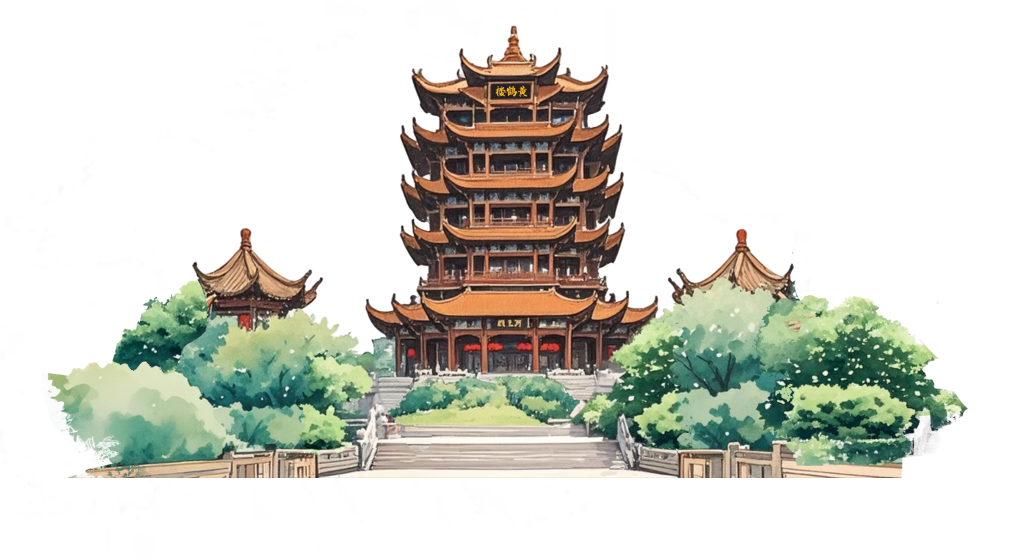
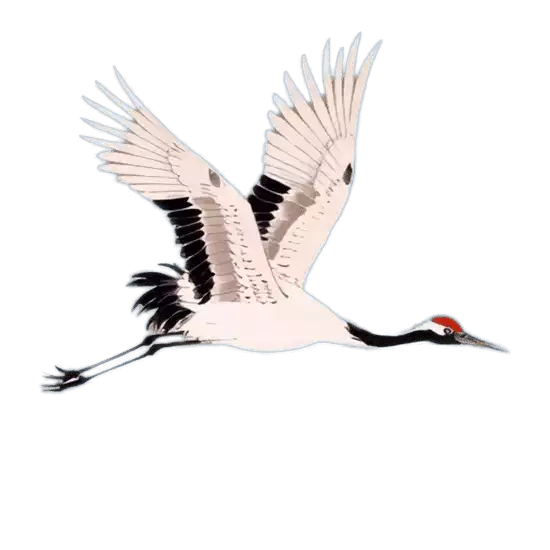
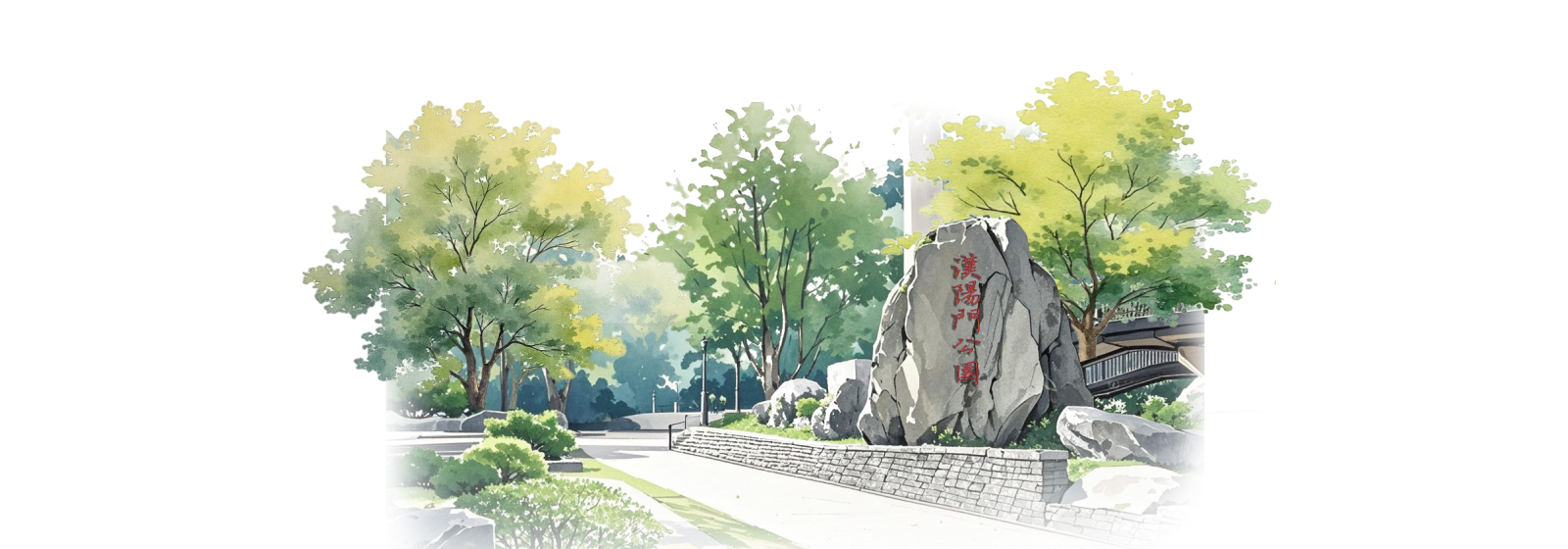
The ancient city of Wuchang, with a history of over a thousand years, once had nine city gates, and Hanyang Gate was one of them. Originally a water gate on the western side of Wuchang ancient city, it was named “Hanyang Gate” because it faced Hanyang across the river. Today, the original city gate no longer exists, but in its place, the Hanyang Gate Garden has become a popular leisure destination. It is a perfect spot for university freshmen to explore Wuhan and for out-of-town visitors to enjoy a city walk.

Guishan Mountain Scenic Area is located on the southwestern side of the confluence of the Yangtze River and Hanjiang River. It is often described as “a mountain like a giant tortoise floating on the water.” It faces Snake Hill (Sheshan Mountain) in Wuchang District across the river. Guishan Mountain, also called “Tortoise Hill,” stands at an elevation of 90.02 m and covers an area of 35.33 hectares. Historically, Tortoise Hill was a strategic site contested by military forces throughout the ages. Today, it has become a popular tourist destination, featuring historical sites such as the “Da Bie Shan” Cliff Stone Carving, Solidified Iron Park, Butterfly Spring, and the Tomb of Lu Su. Modern attractions include the Fuyun Pavilion, Osmanthus Pavilion, Tripod Garden, statues of the Three Kingdoms heroes, the Statue of Huang Xing, the Temple of Tactics, the Panorama Art Gallery, and the Xiang Jingyu Martyrs Cemetery.
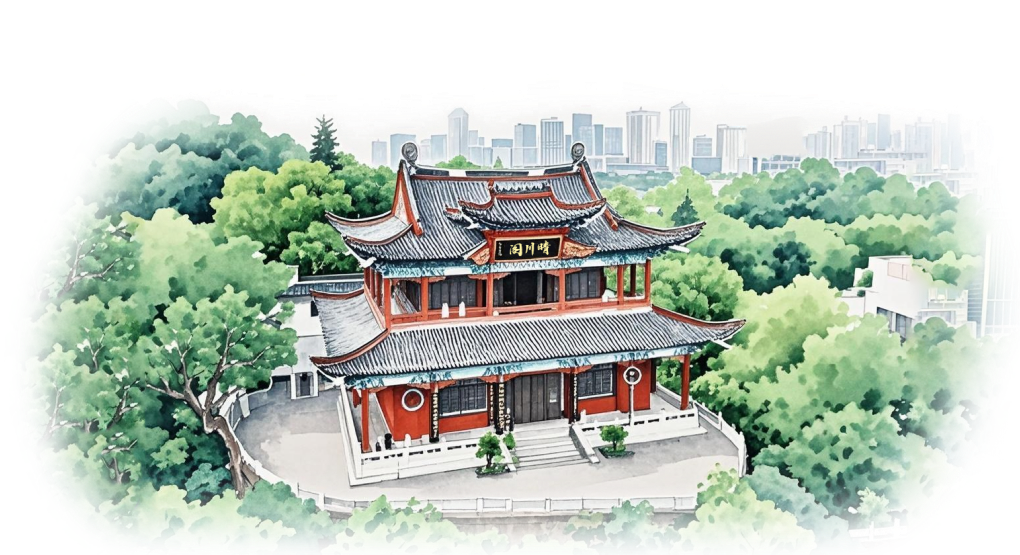
(Wuhan Dayu Culture Museum)
The Qingchuan Pavilion Scenic Area (Wuhan Dayu Culture Museum) is located on the Yugongji Rock, at the eastern foot of Tortoise Hill in Hanyang, facing Yellow Crane Tower across the Yangtze River. It is a renowned historical site that blends ancient architecture with scenic gardens and was officially opened to the public in October 1986. The complex consists of three main structures: Yuji Palace, Qingchuan Pavilion, and Tiemen Pass, along with several auxiliary buildings, including the ancient archway, Chubo Pavilion, Chaozong Pavilion, and Yubei Pavilion. Together, they form Wuhan's only riverside architectural complex featuring both historic and reconstructed ancient-style buildings.
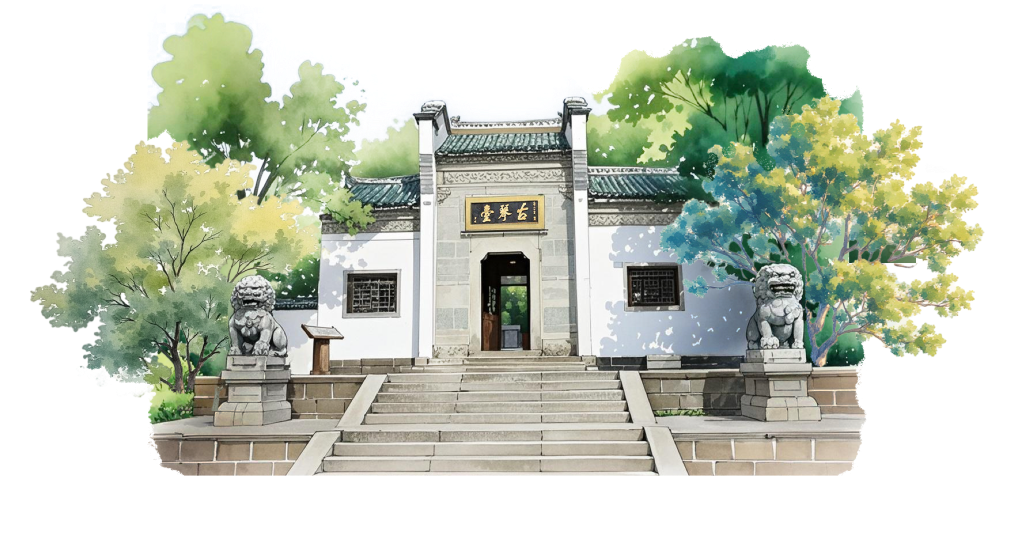
Guqin Terrace was originally built during the Northern Song Dynasty to commemorate Zhong Ziqi and Yu Boya of the ancient state of Chu. Though it has been destroyed and rebuilt multiple times, the legendary story of “High Mountains and Flowing Water” — a tale of profound friendship — has endured through the ages. According to historical records, during the Spring and Autumn Period, the musician Yu Boya encountered Zhong Ziqi at Guqin Terrace. As Boya played High Mountains and Flowing Water on his guqin, Ziqi deeply understood his music, becoming his close friend. They agreed to meet again in a year, but when Boya returned as promised, he learned that Ziqi had passed away. Overcome with grief, Boya broke his guqin and vowed never to play again. Covering about 15 mu (1 hectare), the Guqin Terrace complex features not only its main hall but also courtyards, gardens, flower beds, and tea rooms.
